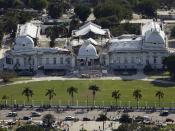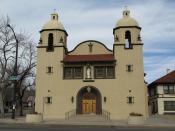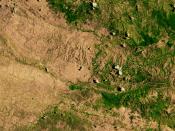Culture of Haiti
Haiti is a country in the West Indies. It covers the western third of the island of Hispaniola, which lies between Cuba and Puerto Rico in the Caribbean Sea. The Dominican Republic covers eastern Hispaniola. Most of Haiti is mountainous, and the country's name comes from an Indian word that means high ground. The Capital of Haiti is Port-au-Prince, which is Haiti's largest city. Haiti is one of the most densely populated and least developed countries in the Western Hemisphere. Most Haitians are farmers and raise barely enough food to feed their families. Poor diet and medical care-especially in rural areas leads to the average Haitian life span to about 50 years. Haiti is also the oldest black republic in the world. In addition, it is the second oldest independent nation in the Western Hemisphere. A slave revolt led to independence in 1804, making Haiti the world's first black-led republic, but most of the time it has been ruled by dictators who have not been interested in the welfare of the people.
Haiti's official name in French, is Republique d'Haiti. Its official name in Creole is Repiblik dAyiti. Both official names mean Republic of Haiti. French and Creole are official languages, but most Haitians speak only Creole.
Language
Haitian Creole is the true national language of the Republic of Haiti. In addition to seven million people in the homeland, it is spoken by about a million Haitians living in the entire world. All Haitians speak the language, but a small minority of about 10% of the population also speaks French, which they have learned either at home or at school. The people in Haiti call Haitian Creole kreyòl. The word creole comes from a Portuguese word meaning "raised in the home". It first referred to Europeans born...


